“If the pictures in this book are about anything other than their shimmering surfaces,” Alec Soth writes in the introduction to his new photo book, A Pound of Pictures, “they are about the process of their own making. They are about going into the ecstatically specific world and creating a connection between the ephemeral (light, time) and the physical (eyeballs, film).”
What follows is an expansive lyrical contemplation of the nature of photography itself and of the innate human impulse to document our own lives. Over the course of a meandering photographic road trip, taking us from Alec’s Minneapolis home down to Memphis, Tennessee and from 2018 through to 2021, Alec encounters sunbathers, waterfalls, bulldog breeders and tombstones, along with obsessive photograph collectors, archivists and other photographers.
These images are accompanied by Alec’s contemporaneous notes from his travels, ranging from anecdotal details about particular subjects or settings to deeper reflections about the form and function of photography and his own unique relationship to image-making. “We take pictures not only to see,” he writes, during a stop in Chicago, Illinois, “but to be seen.”
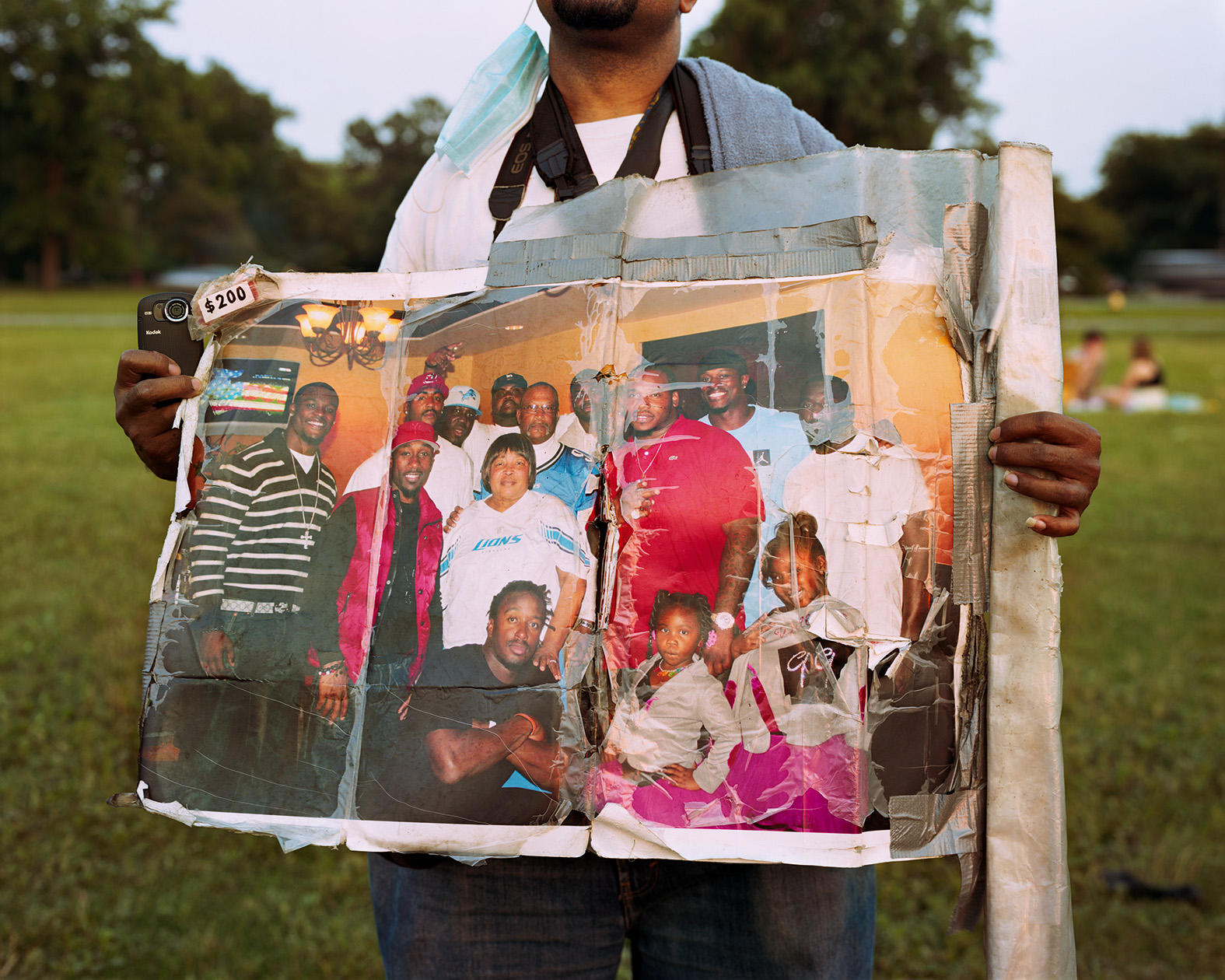
Photography is often viewed as quite an ethereal form, as if were transmitted directly from the mind of the photographer to the mind of the viewer. But in this project, you consider the physical weight, both of the photographs themselves and the cameras and equipment used to produce them. What led you to re-evaluate the form in this way?
Well, I suppose I’m beginning to question how generational these ideas actually are. Because I’m not exactly ancient, but for me, photography is inherently physical. It’s about taking a moment and transforming it into something that can be pinned down and accessed again and again. Like a hunter hanging antlers on their wall or a hobbyist pinning butterflies to a board.
This idea that photographs are fleeting things that only exist on screens and in text streams is still new to me and rather strange. So, I’m becoming increasingly aware of how generationally specific this questioning of the physical qualities of photography, and my attachment to those qualities, are.
That’s interesting. Do you think that we’re experiencing time and memory differently as a result of our reliance on digital media?
I mean, I’m not a neurologist. But for better or worse, our relationship to photography is definitely changing. For me, this project is about the stage of life I find myself. I’ve been working long enough now to reflect on my career, to look back as well as constantly search for the next thing. I’ve noticed that artists often write books about their medium around this age, as if they’ve finally earned the right. I think that’s what I’m doing with this project, considering where I sit within the wider world of images.
A midlife retrospective?
Yeah. I’ve always planned to write a book of essays, not about myself, more my thoughts on photography. In poetry, there’s this term “Ars Poetica”, which comes from a poem by Horace of the same name [written in 19BC] and it’s a poem about poetry. Not an essay, a poem. That’s how I think of this project: A lyrical photo book about lyrical photography.
I read it almost as a visual equivalent to John Berger’s Ways of Seeing.
Exactly! He was an influence for sure. It’s interesting, because I could never have taken on something like this when I was 25. But at the same time, a lot of it’s about trying to recapture the feeling one has at 25, about making work. I spent a lot of time travelling with young assistants in the making of these images, trying to absorb some of their energy. The freedom of not knowing too much and not trying too hard; to let go a little bit. I believe photography works best when it’s unencumbered by thought. But I’m — you know — neurotic. So, there’s a tension there.
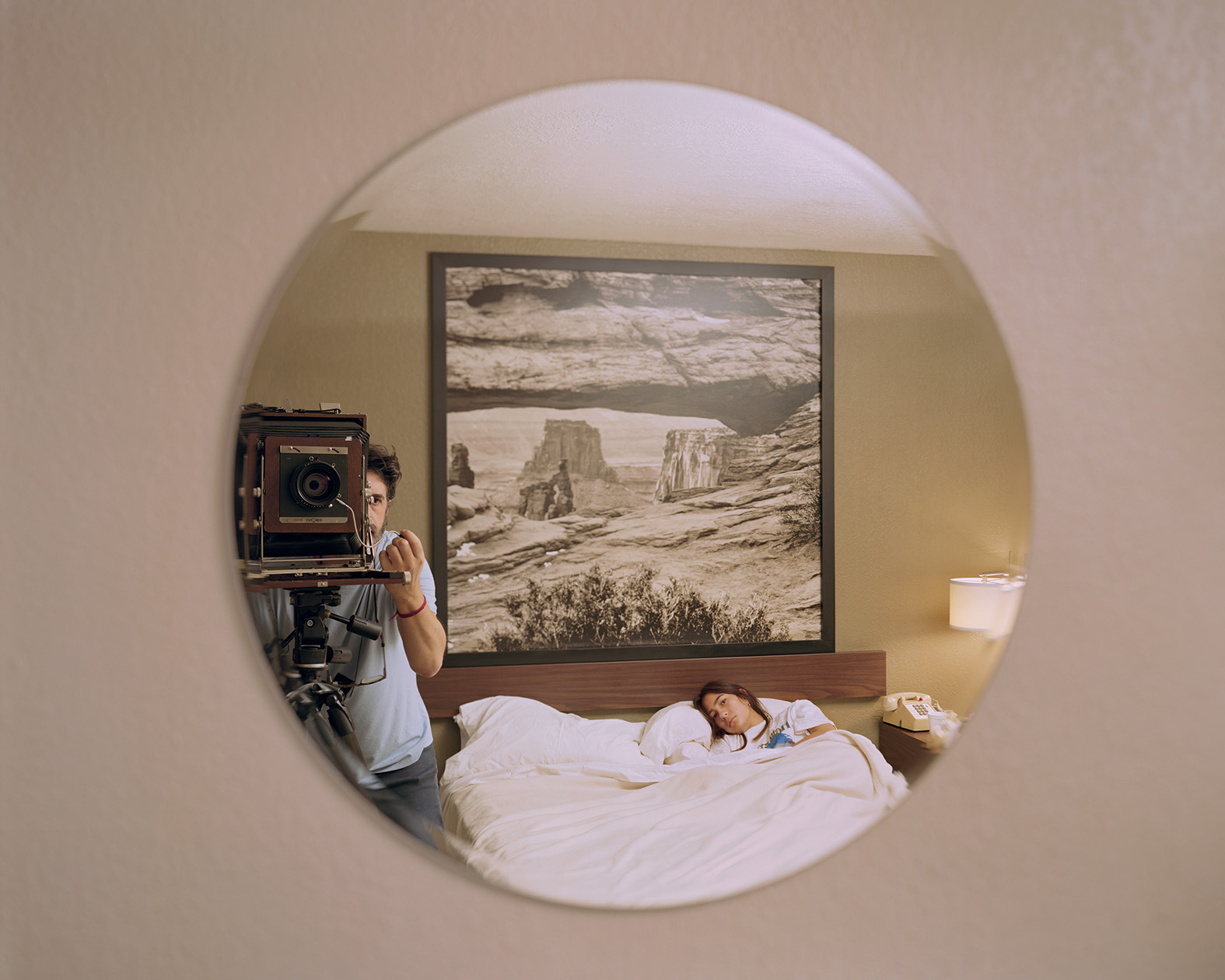
In the short film you made to accompany the book, you describe an experience you had at Niagara Falls, of seeing a young woman with a similar face and strikingly similar makeup to that of a woman you had photographed in the same spot many years before. There’s something deeply intuitive and almost mystical about the way you describe this coincidence. Do you go into a different state of mind when you’re deciding who and what to photograph?
In a perfect world, I do try to enter a kind of heightened mind-space. But I’d be lying if I said I got there every time. Generally, when I first go out photographing, I’m thinking too much and trying too hard, and often forcing things. Because this is my identity: I’m a photographer, and there is a pressure to produce something good. I have the same simple desire to impress people and draw praise as anyone.
Gradually, though, that stuff does start to fall away, and if I follow my intuition and trust in the moment, sometimes I can let go of it completely and let the current take me. That’s when my practice is at its best; when one thing leads effortlessly to another, and I’m just floating. But that’s very rare. The first time I travelled after the [first lockdown], I was so uptight, like I could not get out of my head. And I honestly thought, Oh, man. I might be done.
So many things had happened. I live in Minneapolis, right where George Floyd lived and died, and so there was a lot of heavy political stuff going on. I couldn’t get out of my head, and eventually, I just drove out of town, about 500 miles, and ended up in Memphis, Tennessee. Then I was finally able to start again; to let go.
So yeah, I don’t know if spiritual is the word but certainly meditative.
Travel and exploration are strong themes in your work — most of these archival images were sourced whilst on the road with your assistants. Do you find it helpful to keep your photography separate from your ‘normal’ life in this way?
Yes, definitely. That’s honestly been one of the great struggles for me, that I can’t seem to achieve this state of creativity in my normal life. Because I have responsibilities, I have children. And if I’m home — even if I’m an hour away or on the other side of town — I know someone could call and say can you do this or pick up such and such, and that stops me from letting go to the extent that I need to. I do have the ambition to work from home, but I’ve never quite been able to. A couple of pictures in this book were taken at home, taken during the pandemic era, but they’re outliers.
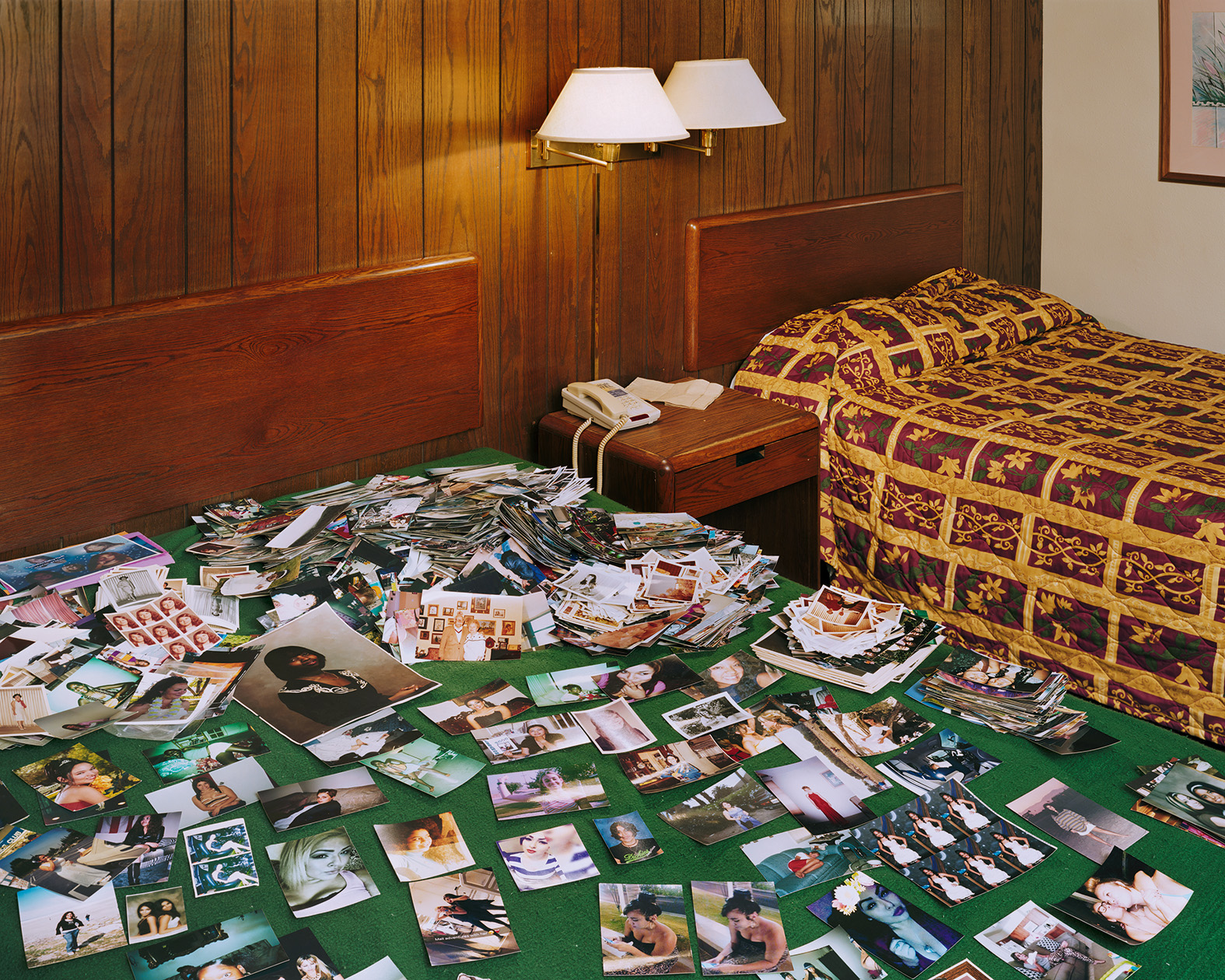
Is collecting other people’s archives something that you’ve been doing for a long time, or was that a new experiment for this project?
I’ve been doing it for years, in one way or another. There was a time I collected ping pong pictures; then, later, it was pictures of seesaws. So I’ve always had odd little fascinations, but this project was a bit different. It was more about amassing huge quantities of photographs.
When you acquire 1000 pictures in one go, it makes you look at the medium in a different way because you quickly become overwhelmed. I visited this guy who sells photographs, and he had like half a million photographs in his house. I spent all day there and looked at about 50,000, and by the end of the day, it felt like my eyeballs had been burned. I started to ask myself questions about what I, as a photographer, am producing? Because there are already so many of these things in the world. Do we really need any more?
That’s what this book is questioning: Why do we take pictures? Why are we perpetually drawn to document life in this way? Because, even though they’re physical, in a literal sense, they’re also ephemeral and are just going to deteriorate over time and disappear. So what’s the point?
In the film that accompanies this book, you question why we prefer to think of history as static images rather than the free-flowing thing it is. What are your thoughts on that now that the book is complete?
Yeah, it’s interesting. I recently read a book about the history of photography, and for the first 25 years of the form existing, they couldn’t figure out how to preserve the image beyond an hour or so. But they were still fascinated by the temporary image while it lasted. And the author’s point was to question our belief that images should last forever. Why does that have more value than an image that only lasts for an hour?
We’re now seeing a return to this way of thinking, albeit for different reasons, in the Snapchat era, and it’s interesting how people have embraced it as something novel and exciting. It’s that same tension again between our instinct to preserve things and our desire to let go.
I made a reference to hunting earlier (for the record, I am not a hunter), and I imagine a similar tension existing between the joy of being out in nature — the complex work of tracking an animal, being completely in the moment — and the finality of the kill. All the joy and excitement must surely lie in the experience, but all you’re left with in the end is a grisly trophy nailed to a wall.
I think there’s a similar dynamic at play with photography, wherein the finished photograph is only a reminder of being in the moment. The books that inspired me as a photographer were ones that evoked this feeling of discovery and experience, and that’s what I want my work to do — to inspire people to emulate my subjects, to get out in the world, or I suppose to emulate me, to take more pictures.
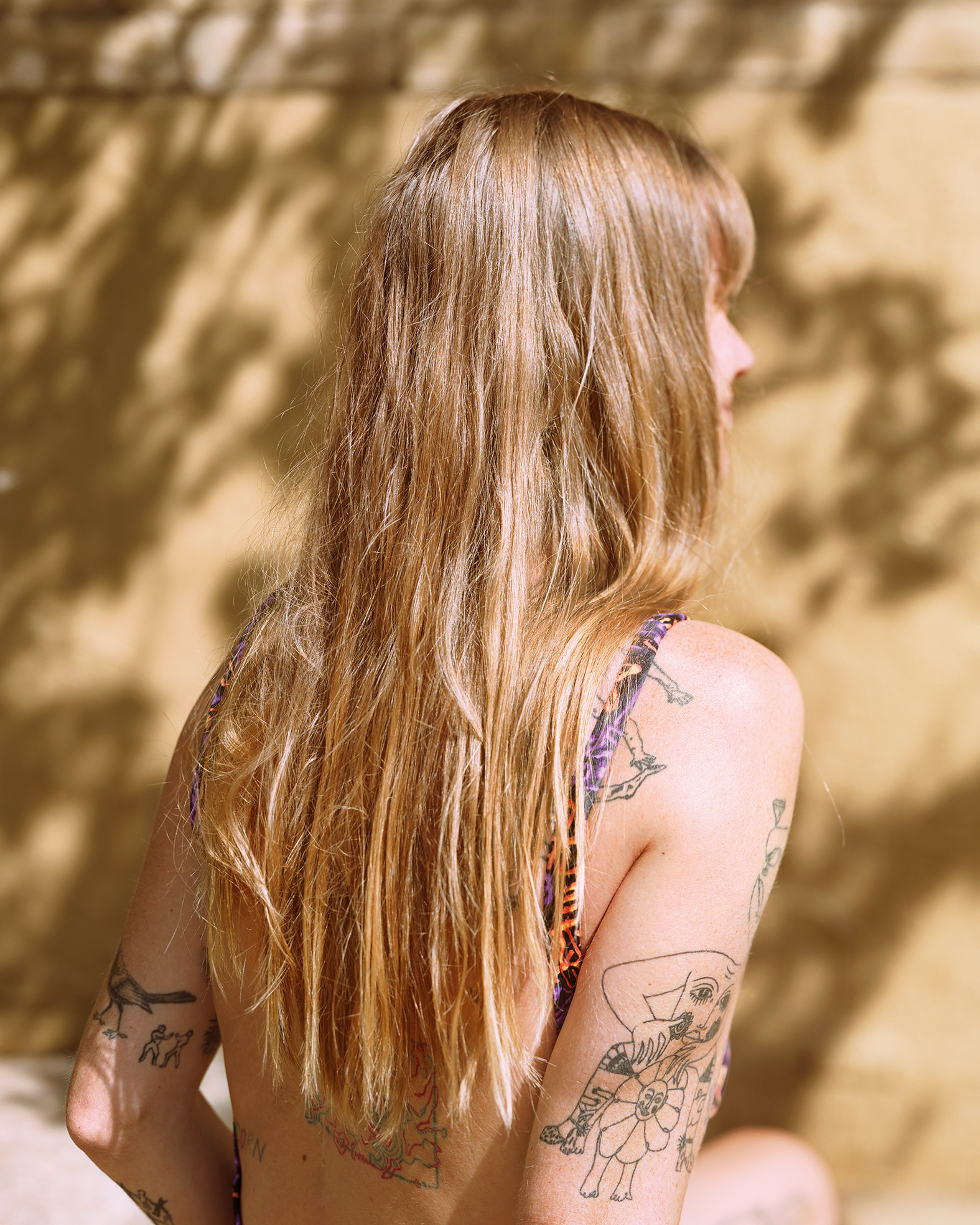
Your images feel very spontaneous. To what degree do you plan in advance? Do you have a list of elements or scenarios that you’re hoping to find, or are you open to whatever happens?
You know, the funny thing is that I do make lists, and they lead me to certain places, but then I end up stumbling upon something else instead. For example, I was determined to shoot some bloodhounds, and there is a picture of a bloodhound in the book. I found a bloodhound breeder and had that experience, which was really, truly crazy, but on the way there, I stumbled upon something else, totally unrelated but interesting, and then that became part of the book. The important thing is being open to the unexpected.
I saw a copy of the book for the first time yesterday. It’s nerve-wracking, because it doesn’t have a clear thematic line. With my first book, Sleeping by the Mississippi, I was doing pretty much the same thing, working this same way, and all I had to do to tie the images together was to say, well, they’re all taken around the Mississippi River.
With this book, there isn’t that clean a line, although it’s exactly the same approach to image-making. I kept asking myself why certain images deserved to go into the book. Is anyone going to care about this? Is it too fragmentary? Is it just going to seem like a big pile of pictures to them? Will they be able to connect? I don’t know the answer yet. We’ll find out soon.
Does reception matter to you?
You know, I’d like to say it doesn’t. But it does, of course, it does. I saw that movie Licorice Pizza the other night, and like, nothing really happens, but I loved it. The characters are just drifting along, and we’re along for the ride, and it’s great. And there are definitely ways for journalists to write about it — about Californian the 70s and romance and waterbeds and all of that — but it’s not like it can be summed up in one snappy line.
And it’s wonderful! But you have to get people in the theatre in the first place, so how do you do that? Because once they’re in, they’ll give you the benefit of the doubt. That film could get made because of who Paul Thomas Anderson is, and I probably benefit from a similar thing. I could only think of publishing a book this sprawling and open-ended at this point in my career because I have a reputation to back me up. Whereas when I made Sleeping by the Mississippi, I had to give it more of a hook to get people in the door.
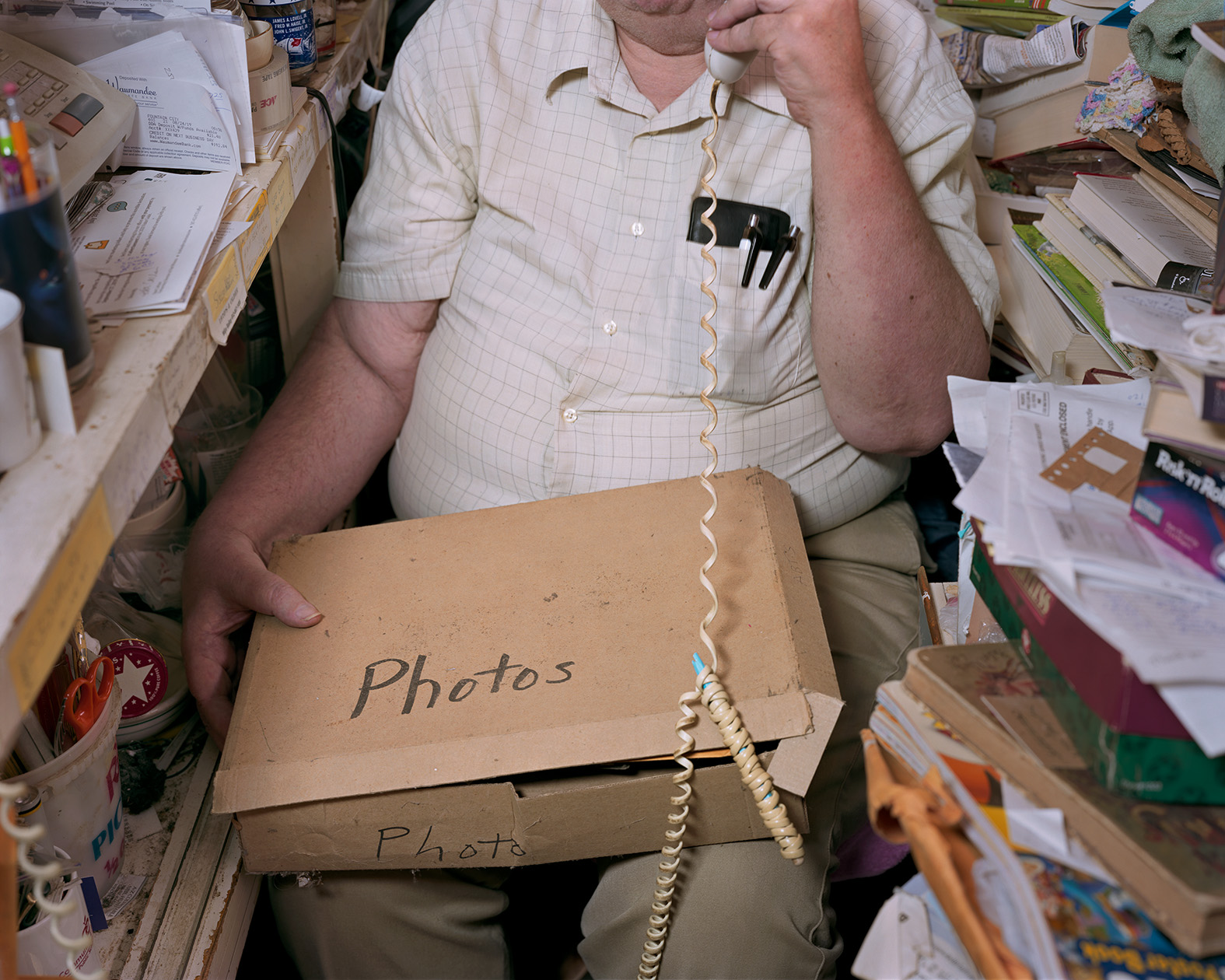
I would imagine that people who collect hundreds of thousands of other people’s photographs are somewhat eccentric?
Well, yes, they can be colourful. But I tend to think that just about everyone is pretty eccentric if you get to know them. And photography is such a good excuse for gaining access. That couple with half a million photographs — you can’t usually go to their house. But I just say that I’m a photographer researching a project, and they let me come and look around. Then I’m driving through Louisiana and think, Oh! I’d love to find some bloodhound breeders. So I find these people, call them up, and next thing I know, I’m visiting their home. I’m constantly finding myself in these crazy situations. The idea of being a normal tourist that just goes to see the things you’re supposed to see is so boring to me.
Do you ever resist taking a picture in favour of just having the experience?
Yeah, that’s the great struggle. It gets back to what I was saying about hunting and fishing. Like would you just take a boat out and sit there for hours? No, we need the excuse of fishing to get us out there. It’s kind of like that for me — the need to take pictures gets me out in the world, but once I’m in the situation, then I’m compelled to photograph it because that’s what brought me there.
But I realised that I was also separating myself from the experience by photographing it. So when I’m talking about reaching this spiritual or meditative state, there’s a critical contradiction there.
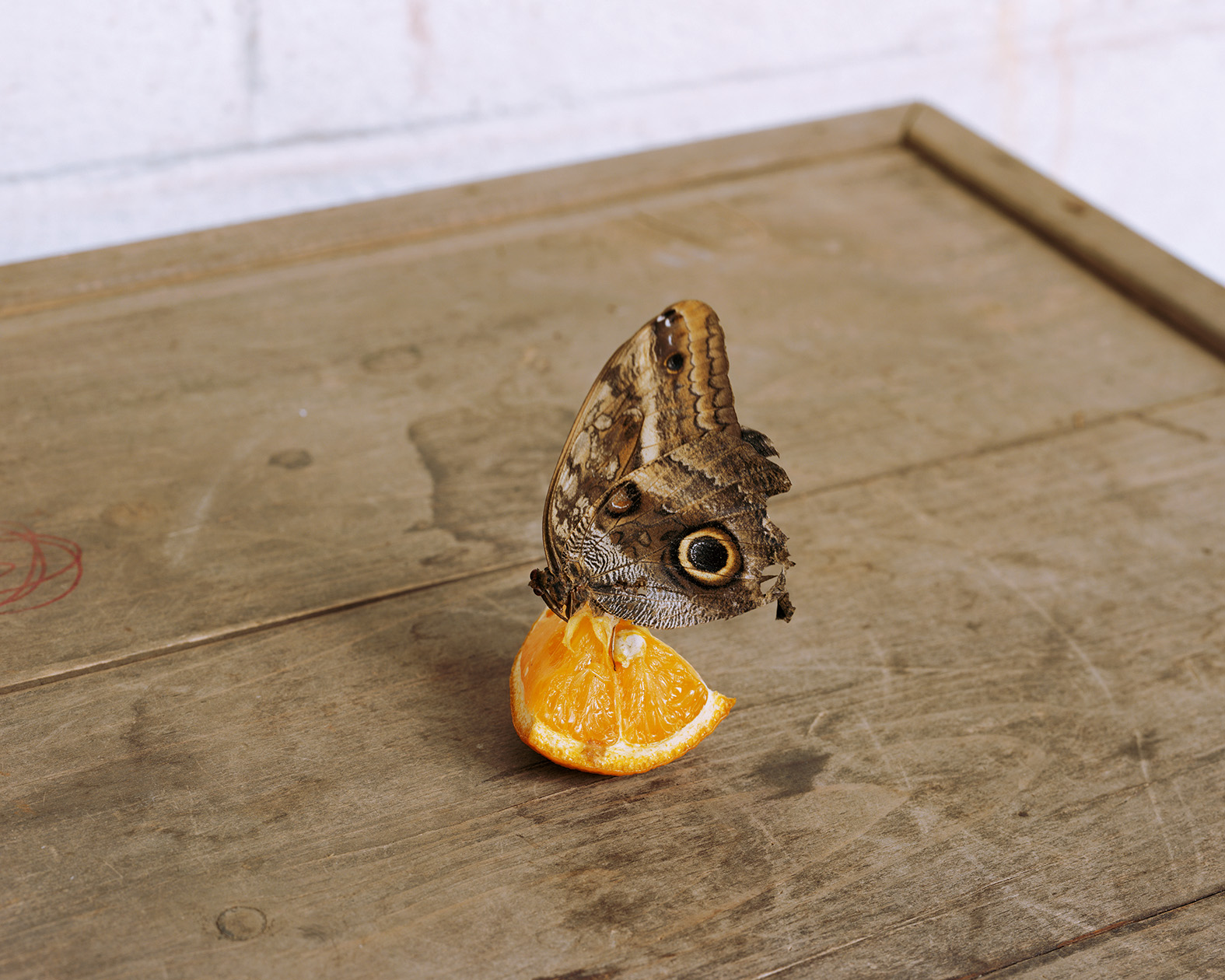
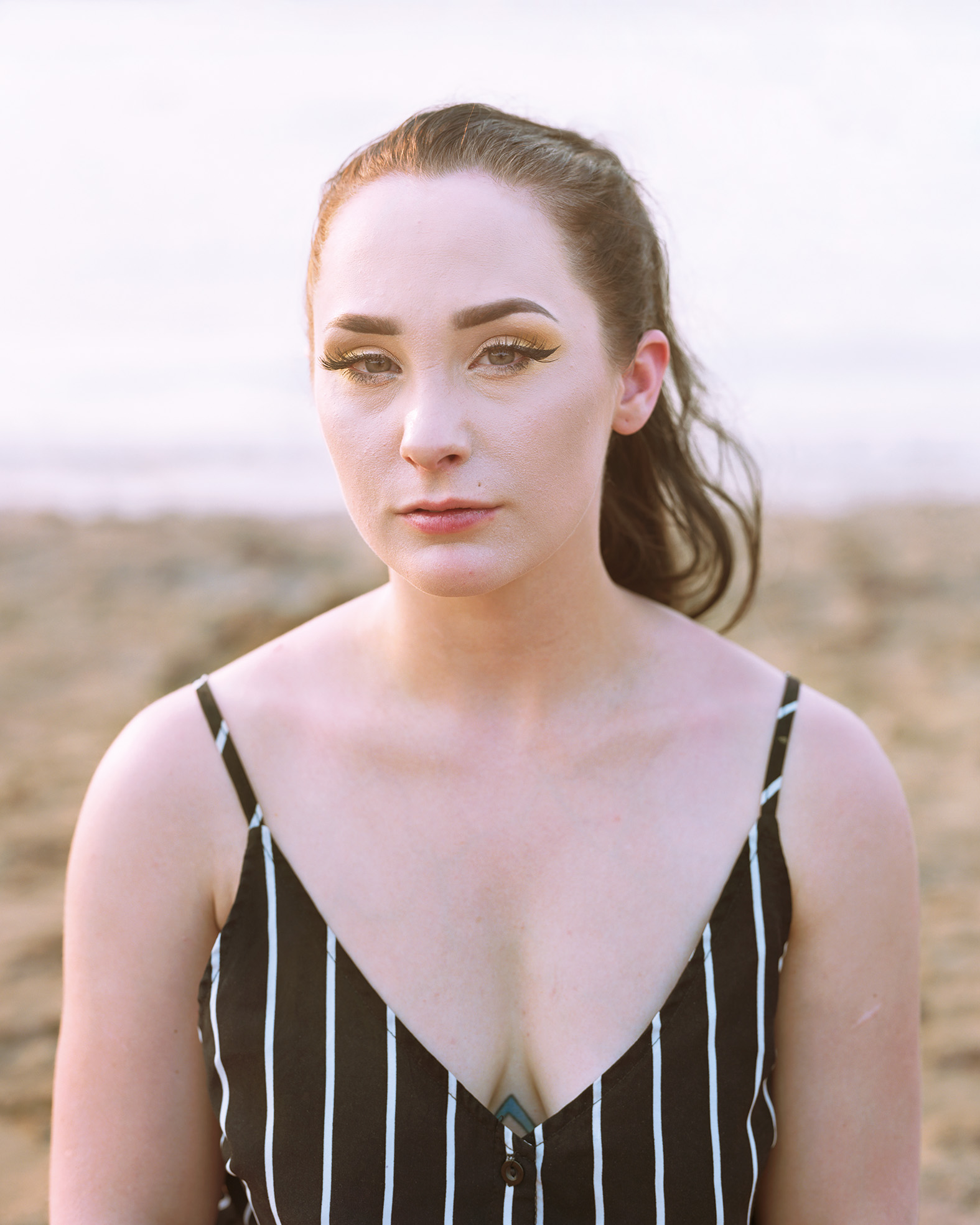
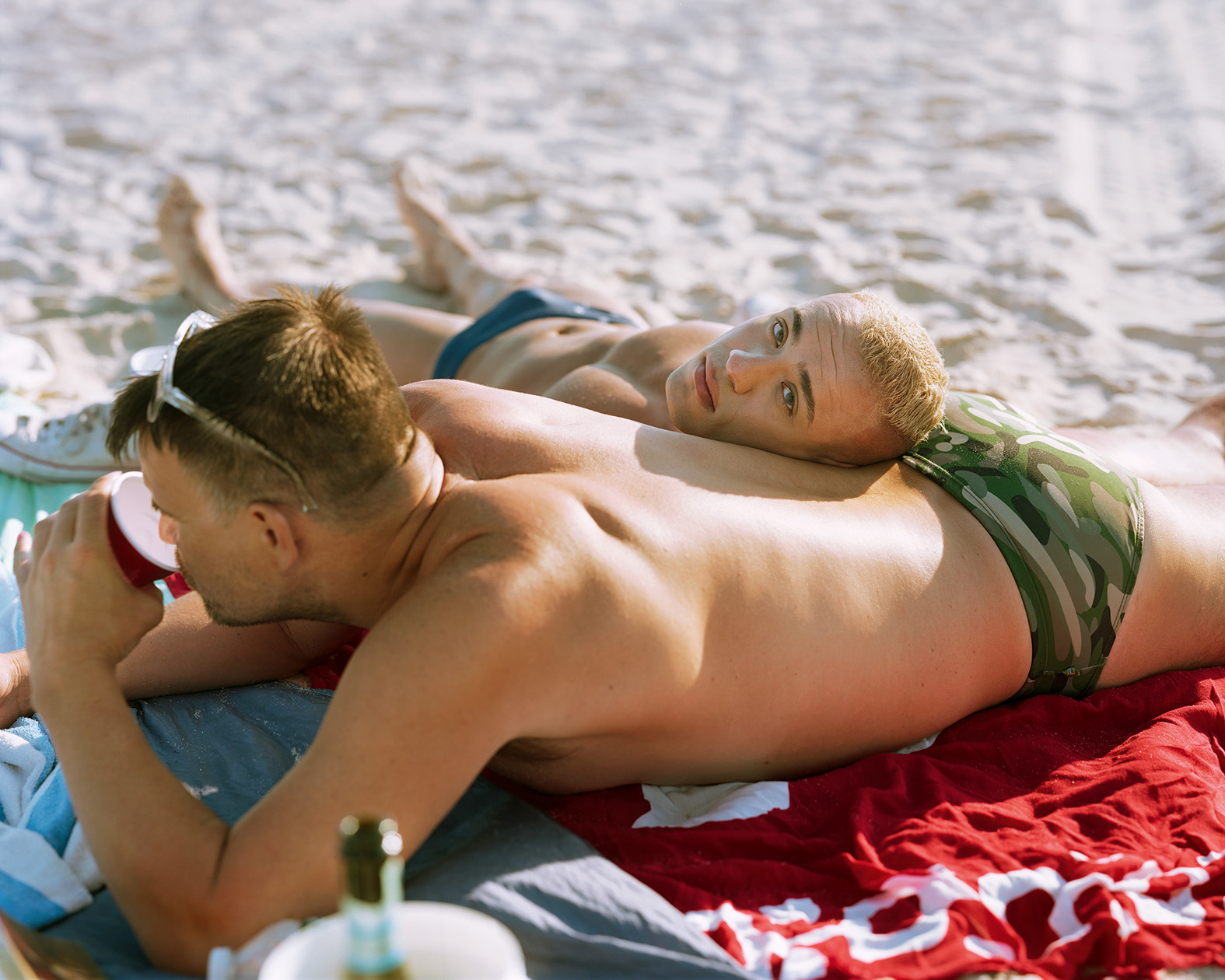
Credits
All images courtesy of the artist and MACK
